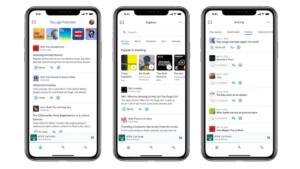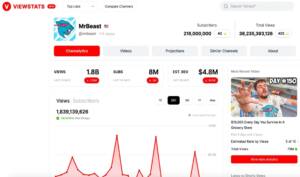Social media has become an essential platform for brands and businesses to promote their products and services, and content creators are an important part of this ecosystem. However, with the rise of influencers and social media personalities, the problem of fake followers has become rampant.
Fake followers can deceive brands into thinking that a content creator has a large and engaged audience, when in reality, they have purchased their followers and likes. This not only cheats brands but also deceives real followers who may be influenced by content creators with false statistics.
In this blog post, we will discuss best practices for spotting fake followers on content creators’ social media accounts.
Skewed Engagement Metrics
One of the most obvious signs of fake followers is skewed engagement metrics. This means that the content creator has a large number of followers but little to no engagement on their posts. This is a red flag because it is highly unlikely that a content creator with a large following would not have any engagement on their posts. Engagement metrics include likes, comments, shares, and clicks. If a content creator has a large number of followers but very few likes or comments on their posts, it is possible that they have purchased their followers. A good practice is to check the ratio of followers to engagement. If the ratio seems off, then it is likely that the followers are fake.
Comments Being Turned Off
Another red flag is when comments are turned off on a content creator’s posts. Comments are an important way for followers to engage with a content creator and share their thoughts on the content. If comments are turned off, it could be a sign that the content creator is trying to hide something. For example, if they have purchased fake followers and are afraid that their comments will reveal this. A good practice is to check if the content creator regularly turns off comments on their posts or if it is just on select posts.
Random Comments that have Nothing to do with the Post
Another way to spot fake followers is by looking at the comments on the content creator’s posts. If the comments seem random and have nothing to do with the post, it could be a sign that the comments are fake. Fake comments are often generated by bots and can include comments like “great post,” “awesome,” or “love this.” These comments are generic and do not provide any specific feedback on the content. A good practice is to read through the comments and see if they seem genuine and relevant to the post.
Random Spikes of Likes/Comments that Deviate Well Away from the Creator’s Average
Another sign of fake followers is random spikes in likes or comments that deviate well away from the content creator’s average. For example, if a content creator usually receives around 500 likes on their posts, but suddenly receives 5,000 likes on one post, it could be a sign of purchased likes. Purchased likes and comments are often used to boost the engagement metrics on a post, making it appear more popular than it actually is. A good practice is to keep an eye on the content creator’s engagement metrics and see if there are any sudden spikes that seem out of place.
Exact Same Like/Comment Amount on Multiple Posts
Another way to spot fake followers is by looking at the exact same like/comment amount on multiple posts. For example, if a content creator has 10,000 followers and every post they make receives exactly 100 likes and 50 comments, it could be a sign of purchased engagement. Purchased engagement often comes in packages, where a content creator can purchase a set number of likes or comments for each post. A good practice is to look at the engagement metrics on multiple posts and see if they are consistent or if there are any patterns that seem suspicious.
Other Practices to Consider
Here are some other practices to consider when trying to spot fake followers on content creators’ or influencer’s social media accounts:
Check for inactive followers: Another way to spot fake followers is by checking for inactive followers. This means checking the content creator’s follower list to see if there are any accounts that have not posted or engaged with any content recently. If there are a large number of inactive followers, it could be a sign that the content creator has purchased their followers. Real followers are more likely to engage with the content creator regularly, so a high number of inactive followers is suspicious.
Analyze the quality of engagement: Another practice to consider is analyzing the quality of engagement on a content creator’s posts. Real engagement includes thoughtful comments, shares, and likes from followers who are genuinely interested in the content. Fake engagement, on the other hand, often includes generic comments or likes from fake accounts. Analyzing the quality of engagement can help you spot fake followers and determine if a content creator’s audience is genuine.
Look for a diverse audience: A content creator with a diverse audience is more likely to have a genuine following than one with a homogenous audience. Though, if a creator is very niche specific, like an athlete, most of their followers will probably have an interest in the same niche. A diverse audience includes followers from different regions, ages, and backgrounds, while a homogenous audience includes followers from the same region, age group, or background. A content creator with a homogenous audience is more likely to have purchased their followers, as it is easier to target a specific demographic with fake followers.
Use social media analytics tools: Social media analytics tools can help you analyze a content creator’s engagement metrics and determine if their audience is genuine. These tools can analyze metrics such as likes, comments, shares, and follower growth to determine if a content creator’s engagement is authentic or fake. Some popular social media analytics tools include Hootsuite, Sprout Social, and Iconosquare.
Research the content creator’s history: Researching a content creator’s history can help you determine if they have a pattern of buying fake followers. You can do this by looking at their older posts and analyzing the engagement metrics, checking their follower growth over time, and looking for any suspicious activity on their account. If a content creator has a history of buying fake followers, it is likely that they will continue to do so in the future.
Spotting fake followers on content creators’ social media accounts requires a combination of practices. Skewed engagement metrics, comments being turned off, random comments that have nothing to do with the post, random spikes of likes/comments that deviate well away from the creator’s average, and the exact same like/comment amount on multiple posts are all red flags that a content creator may have purchased their followers. Other practices to consider include checking for inactive followers, analyzing the quality of engagement, looking for a diverse audience, using social media analytics tools, and researching the content creator’s history.
By following these best practices, brands and businesses can ensure that they are working with genuine content creators who have a real following and can provide valuable engagement for their campaigns.




